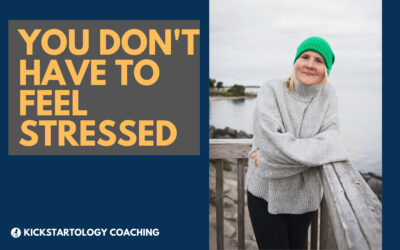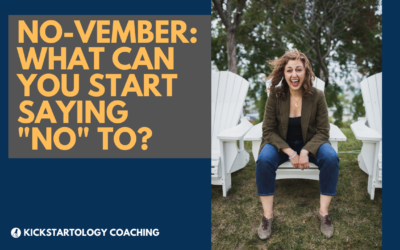ADHD and Habits: Why Identity Matters More Than Willpower
You ever tell yourself, This is it — this is the week I’m going to get my act together? You buy the nice notebook. You block your calendar. You pick your “focus” playlist. Maybe you even clear your kitchen counter so your brain can breathe.
And then by Wednesday, the notebook’s untouched, the playlist is background noise while you scroll, and you’re eating hummus straight from the tub with a baby carrot as a spoon.
We’ve all been there.
Here’s the thing. Habits don’t stick because we “should” do them. Or even because we know they’re good for us. They stick when they feel like us. Not aspirational us. Not conference-presentation version of us. Actual us — messy, inconsistent, half-dressed us.
Find out more about ADHD Coaching.
The ADHD Habit Shift: It’s About Identity, Not Discipline
Here’s what makes a difference: identity. Research in behavioural science — including work from James Clear and B.J. Fogg — shows that habits are more likely to stick when they align with your self-concept. In other words, when a habit confirms who you believe you are, your brain doesn’t resist it in the same way.
If you think of yourself as someone who’s scattered and disorganized, it’s going to be hard to build habits that require structure. But if you begin to see yourself as someone who cares about protecting their energy and time, the same habits — planning, prepping, finishing — start to feel like acts of self-respect, not self-correction.
ADHD Brains Need Habits That Feel Personal
Now add ADHD to the mix.
Motivation is hit-or-miss. Memory is sketchy. Routines often collapse under the weight of boredom or novelty-seeking. If a habit feels like pressure, your brain’s already drafting the excuse to bail.
But when a habit feels like something you do because it reflects a version of you that already exists it doesn’t feel like a fight.
Let’s replace the usual example.
Say you’re trying to eat something before noon that isn’t caffeine and sugar. You could call it “being healthier,” but that doesn’t do much for an ADHD brain. Try this: “I’m someone who fuels my brain so I can think clearly in the morning.” That shift reframes the food as a tool, not a task. It feels like something you do because it works for your brain, not because you’re chasing some gold star for good behaviour.
Three ADHD-Friendly Habits with Real Impact
If you’re wondering where to start, some habits punch way above their weight for people with ADHD — especially when they become part of your identity, not just another item on a to-do list:
- Move your body early
Even ten minutes makes a difference. A walk, stretching, dancing while brushing your teeth. It boosts dopamine and kickstarts your executive functioning.
Here’s the research - Write something down by hand
Your brain can’t keep everything in working memory. A quick handwritten list or note slows your thoughts just enough to make them clearer. - Anchor your day with one consistent time cue
This isn’t a full routine. It’s one moment that signals to your brain that time exists — like making tea at the same time every day or reviewing a short list before you start work.
Backed by science
But What If It Still Feels Fake?
Honestly? It probab;y will at first.
There’s always a gap between who we believe we are and what we’re trying to act like. That’s normal. But if the habit is reinforcing a version of you that you actually like — not someone you’re pretending to be — the fake feeling fades fast.
And no, you don’t have to stick to it perfectly for it to count. Missing a day doesn’t mean you aren’t that person. It means you’re human. And possibly out of peanut butter.
Try This
Pick one habit you’ve been circling for weeks. Something small. Not a full system, not a life overhaul. Ask yourself, “What kind of person does this?”
Then test out what it feels like to act as if that person might be you. Not in the future. Now.
Because chances are, it already is. They’re just waiting for you to give them something to do.
P.S. If you want some help figuring out the next part, book a free coaching exploration call. We’ll talk about what’s going on and whether group coaching or 1-on-1 coaching fits. No pressure. Just clarity.
Not ready to talk?
Start with my FREE mini starter course:
KICKSTART: THE FIRST STEP
Make the decision that changes everything else.
Clarity, commitment, and forward motion. Ten minutes a day. Starting now.
How Fear of Vulnerability Can Keep You Stuck
By Toronto Life & Mindset Alignment Coach Stephanie J. Marshall Fear of Vulnerability: Why It Feels Safer to Wait and What That Wait Is Costing You Hesitation often masquerades as logic. A decision sits unmade, not because of confusion or a lack of information,...
You Don’t Have To Feel Stressed
By Stephanie J. Marshall, Toronto-based Master Alignment Coach The Annoying Thing Coaches Say: "You don't have to feel stressed." Stress doesn't feel like an active choice, and we can't just change our feelings on the spot because we want to. But consider this: Do...
NO-vember: Why saying no is the best alignment tool
By Nadine Araksi, Toronto-based Story Coach NO-vember: The Power of Saying No Do you say yes to everyone and every request reflexively before reviewing what you had actually committed to for yourself? What does that look like? A work request comes through, and you...






